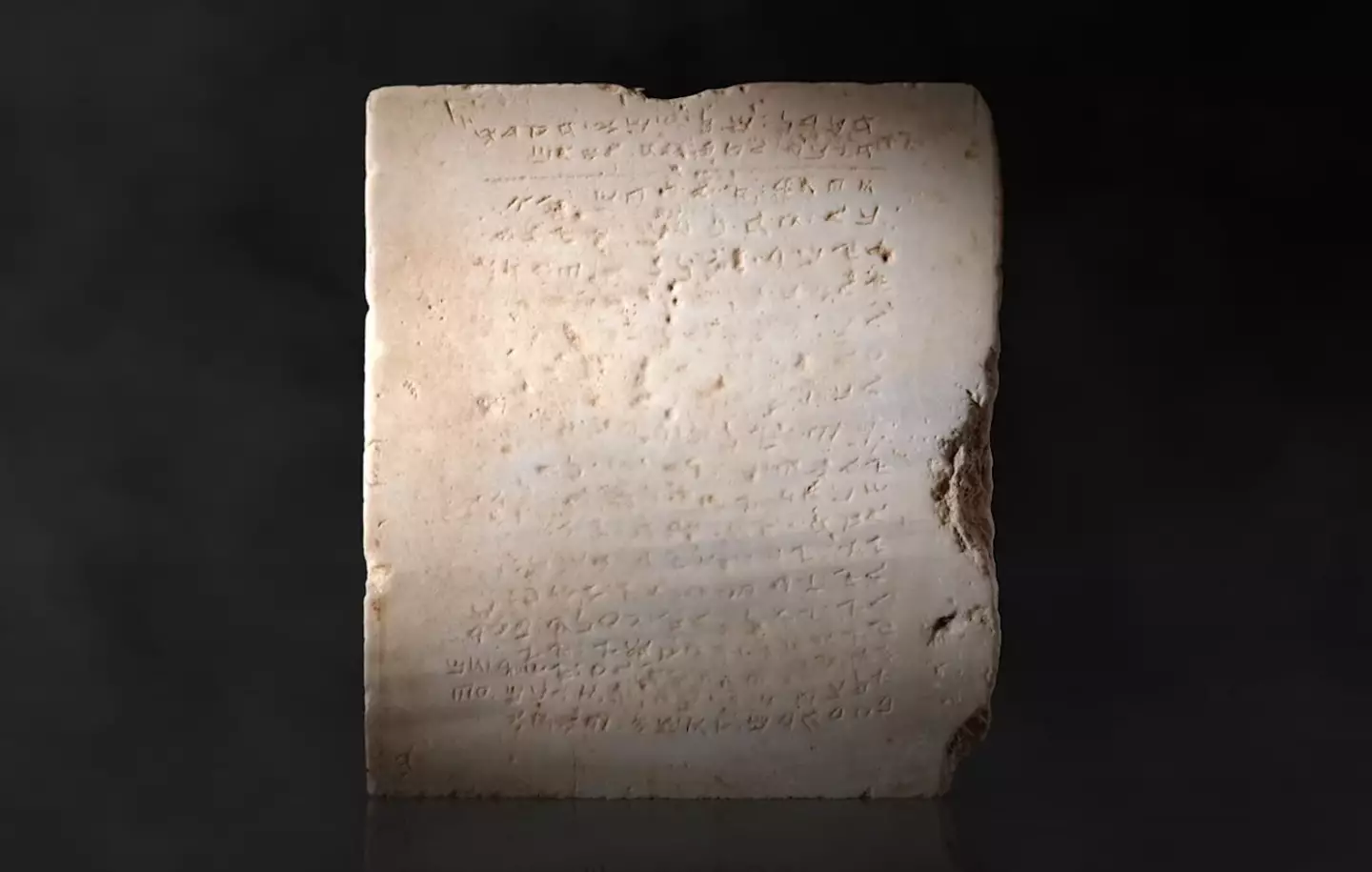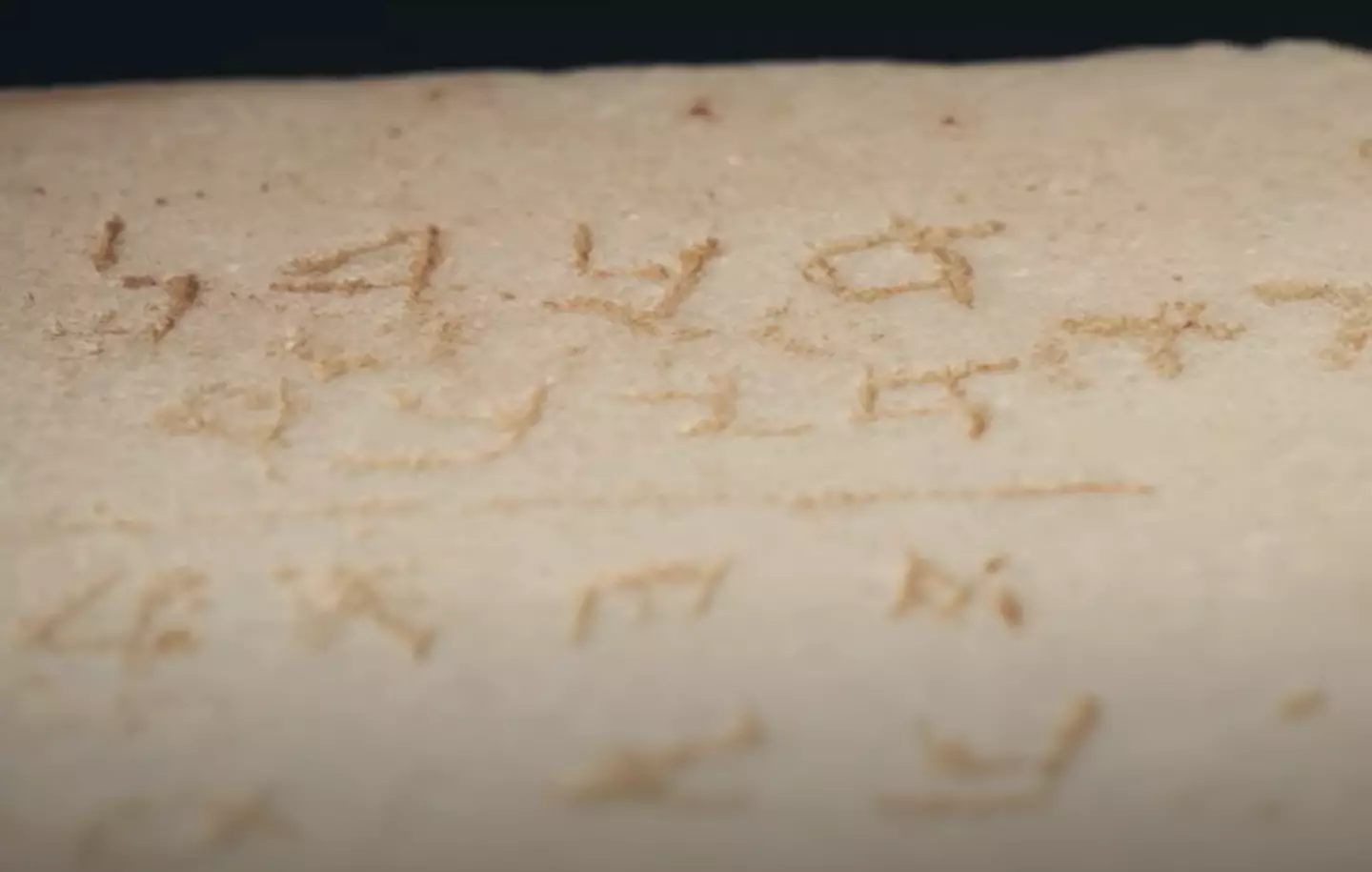A paving slab which later turned out to be the oldest stone tablet featuring the 10 Commandments is now available at auction – and it could be yours for just $2 million (£1.57 million).
In the latest edition of weird and wonderful news stories, a paving slab used outside a home in Israel was discovered to be a 1,500-year-old tablet featuring the inscription of the Biblical commandments.
Perhaps the most bizarre part of the story is the fact that the tablet was originally uncovered near a railway line back in 1913, however its significance at the time wasn’t realised.
Instead the two feet tall, 115 pound slab was recycled and used as a paving stone outside someone’s home.

The tablet had been used as a paving slab outside someone’s home (YouTube/Sotheby’s)
Laid face up and exposed to the elements, the slab was walked over by countless numbers of people for 30 years until someone noticed the significance of the ancient inscription.
The tablet is written in the long disused language Paleo-Hebrew – which would explain how people weren’t aware they were walking over a piece of history. However the constant wear and tear means the inscription is no longer completely clear in some places.
The tablet has since been declared ‘the oldest known carving’ of the Biblical ten commandments, a piece of scripture used in both Christianity and Judaism – and has been dated to the late Roman-Byzantine era.
However, historians have noted the text has one major difference from the commandments most of us would be aware of – which gives us an insight into who the text may have belonged to.

The tablet is written in the long disused language Paleo-Hebrew (YouTube/Sotheby’s)
Typically, the third line in the 10 commandments would read: “Thou shalt not take the name of the Lord in Vain,” a phrase which many of us may remember disapproving grandparents using to scold us as a response to phrases such as ‘Oh my God’.
Instead, this tablet instructs the reader to pray on Mount Gerizim, which is a place of religious significance for the Samaritans.
For anyone who studied R.E. in school, the word ‘Samaritan’ will likely ring a bell, as in the Bible story ‘The Good Samaritan’.
Samaritans aren’t just characters in a Bible story but in-fact an ethno-religious group who broke away from mainstream Judaism around 3,000 years ago.
As for the tablet’s future, it’s set to go on auction at Sotheby’s for around $2 million (£1.57 million) on 18 December.
“This remarkable tablet is not only a vastly important historic artefact, but a tangible link to the beliefs that helped shape Western civilisation,” Richard Austin, Sotheby’s global head of books and manuscripts, said in a statement.
“To encounter this shared piece of cultural heritage is to journey through millennia and connect with cultures and faiths told through one of humanity’s earliest and most enduring moral codes.”





